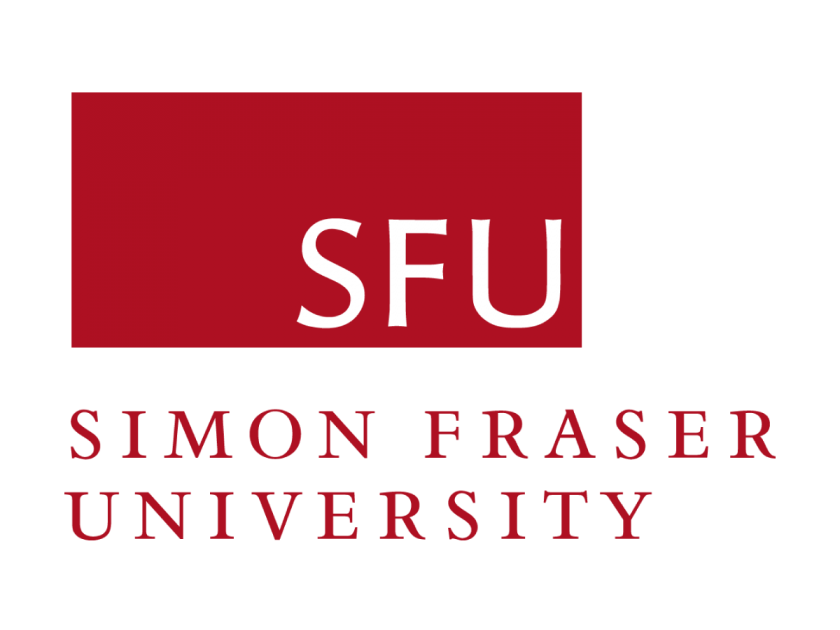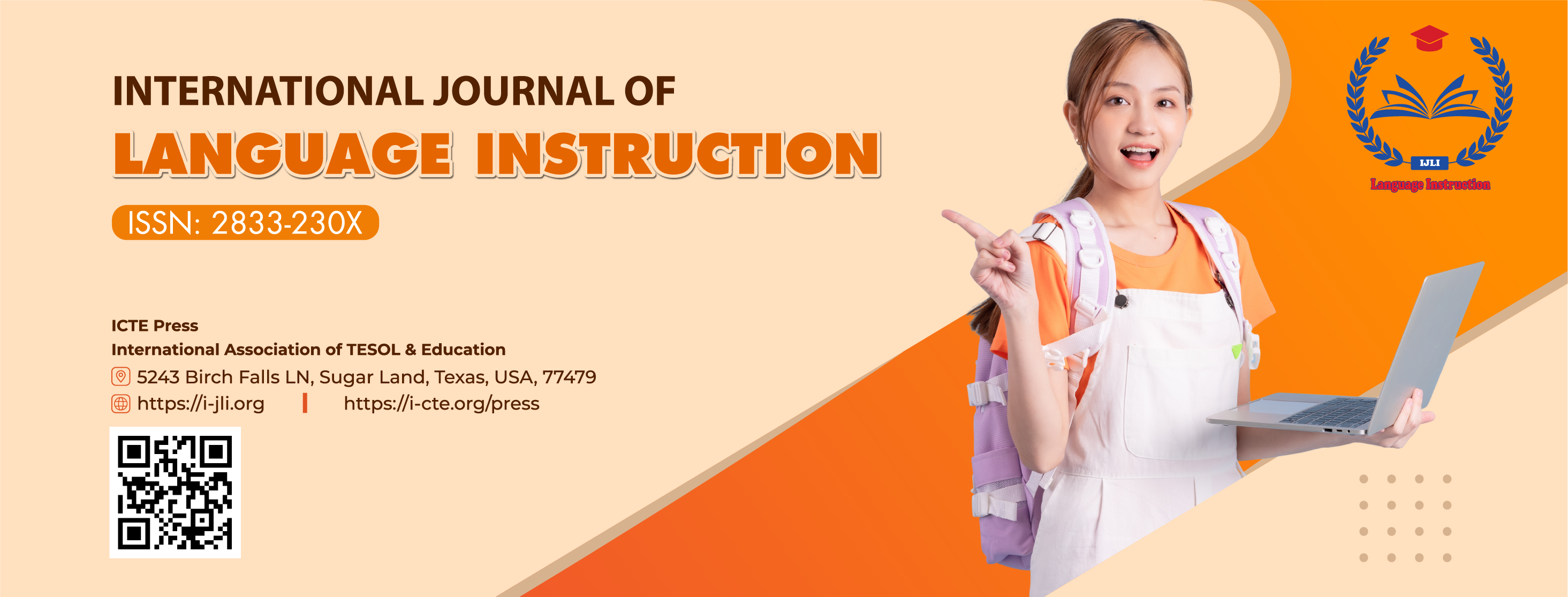Students’ Perspectives on the Use of Teacher Questions to Promote Critical Thinking in EFL Classrooms
DOI:
https://doi.org/10.54855/ijli.24321Keywords:
critical thinking, critical thinking skills , teacher questions, students’ perspectivesAbstract
In the age of AI, critical thinking skills have proven indispensable for students to achieve a competitive edge and high employability. Theoretically, teacher questions play an important role in fostering this thinking ability during classroom interaction. In reality, nevertheless, classroom questions are predominantly low-cognitive, rarely paying way for any development of critical thinking. In this regard, the purpose of the study is to shed light on how students view the use of questions in developing critical thinking, and their perspectives on useful support to answer high-ordered questions. The study involved seventy English-majored students at Van Lang University. Given the purpose of the study, quantitative research was used to collect data about students’ perspectives through a questionnaire. The results showed that most students held positive attitudes toward using high-ordered questions, and they acknowledged the benefits these questions offer. In terms of suggestions, they highly valued a comfortable learning environment and group discussion as the most useful support.References
Anderson, L. W., & Krathwohl, D. R. (2001). A taxonomy for learning, teaching, and assessing: A revision of Bloom's taxonomy of educational objectives: complete edition. Addison Wesley Longman, Inc.
Brancati, F. L. (1989). The art of pimping. JAMA, 262(1), 89-90. https://doi.org/10.1001/jama.1989.03430010101039
Brualdi Timmins, A. C. (1998). Classroom Questions: Practical Assessment, Research, and Evaluation. 6(6), 1-3. https://doi.org/10.7275/05rc-jd18
Burden, P. R., & Byrd, D. M. (2018). Methods for effective teaching: Meeting the needs of all students. Pearson.
Chin, C. (2008). Teacher Questioning In Science Classrooms: What Approaches Stimulate Productive Thinking? In Science education at the nexus of theory and practice (pp. 203-217). Brill. https://doi.org/10.1163/9789087904227_013
Christenbury, L., & Kelly, P. P. (1983). Questioning: A path to critical thinking. https://doi.org/Retrieved from http://files.eric.ed.gov/fulltext/ED226372.pdf
Detsky, A. S. (2009). The art of pimping. JAMA, 301(13), 1379-1381. https://doi.org/10.1001/jama.2009.247
Dislen, G. (2013). The Reasons of Lack of Motivation from the Students’ and Teachers’ Voices. ASOS Journal: The Journal of Academic Social Science, 1(1), 35-45. https://doi.org/10.16992/ASOS.13
Elder, L., & Paul, R. (1994). Critical thinking: Why we must transform our teaching. Journal of Developmental Education, 18(1), 34-35.
Elder, L., & Paul, R. (1998). The role of Socratic questioning in thinking, teaching, and learning. The Clearing House, 71(5), 297-301. https://doi.org/10.1080/00098659809602729
Ennis, R. H. (2015). Critical thinking: A streamlined conception. In The Palgrave handbook of critical thinking in higher education (pp. 31-47). Springer.
Esparrago-Kalidas, A. J., Manla, E., Agot, X. J., Blanco, L. C., Carrasco, N., & Frasco, M. R. (2023). Verbal instructional modeling: An intervention to improve students' perceived level of confidence in critical thinking skills. International Journal of Language Instruction, 2(2), 37-51. https://doi.org/10.54855/ijli.23223
Fong, C. J., Kim, Y., Davis, C. W., Hoang, T., & Kim, Y. W. (2017). A meta-analysis on critical thinking and community college student achievement. Thinking Skills and Creativity, 26, 71-83.
Grant, H., & Dweck, C. S. (2003). Clarifying achievement goals and their impact. Journal of personality and social psychology, 85(3), 541-553. https://doi.org/10.1037/0022-3514.85.3.541
Halpern, D. F. (2013). Thought and knowledge: An introduction to critical thinking. psychology press.
Ho, T. M. L., & To, M. T. (2022). Delegating Critical Thinking Skills in Learners through Effective Questioning Technique in the Class. International Journal of TESOL & Education, 2(3), 13-31. https://doi.org/10.54855/ijte.22232
Huynh, N. (2022). Teachers’ Perceptions on Questioning Strategies at Pre-Speaking Stage in EFL Classroom Interaction–A Case of a University of Mekong Delta. International Journal of Language Instruction, 1(1), 53-64. https://doi.org/10.54855/ijli.22116
Jafarigohar, M., Hemmati, F., Rouhi, A., & Divsar, H. (2016). Instructors' attitudes towards the reflection of critical thinking in course syllabi: evidence from an expanding circle. Theory and Practice in Language Studies, 6(1), 59-67. https://doi.org/10.17507/tpls.0601.08
Kauchak, D. P. E., P. D. (2007). Learning and teaching: Research-based methods. Pearson Allyn and Bacon.
Khan, W. B., & Inamullah, H. M. (2011). A study of lower-order and higher-order questions at secondary level. Asian Social Science, 7(9), 149. https://doi.org/:10.5539/ass.v7n9p149
Krashen, S. (1986). Principles and practice in second language acquisition. (Oxford:Pergamon Press. )
Kurihara, N. (2017). Peer review in an EFL classroom: Impact on the improvement of student writing abilities. The Asian Journal of Applied Linguistics, 4(1), 58-72.
Kurniawati, A. R., & Fitriati, S. W. (2017). Realization of Teachers’ Questions to Uncover Students’ Cognitive Domain of English Subject Matter in Classroom Interaction. English Education Journal, 7(3), 194-200. https://doi.org/https://journal.unnes.ac.id/sju/eej/article/view/20735
Larsson, K. (2017). Understanding and teaching critical thinking—A new approach. International Journal of Educational Research, 84, 32-42.
Lewis, A., & Smith, D. (1993). Defining higher order thinking. Theory into practice, 32(3), 131-137. https://doi.org/10.1080/00405849309543588
Li, L. (2016). Integrating thinking skills in foreign language learning: What can we learn from teachers’ perspectives? Thinking Skills and Creativity, 22, 273-288. https://doi.org/10.1016/j.tsc. 2016.09.008
Marin, M. A., & de la Pava, L. (2017). Conceptions of critical thinking from university EFL teachers. English Language Teaching, 10(7), 78-88. https://doi.org/10.5539/elt.v10n7p78
Nguyen, T. D. T., & Nguyen, H. B. (2023). The effects of questioning as pre-reading activity on EFL grade 12 students’ critical thinking in reading classes in Kien Giang Viet Nam. European Journal of English Language Teaching, 8(4), 88-111.
Norton, F. (2020). Developing critical thinking and professional identity in the arts through story. Practice-Focused Research in Further Adult and Vocational Education: Shifting Horizons of Educational Practice, Theory and Research, 121-144. https://doi.org/10.1007/978-3-030-38994-9_7
Orlich, D. C., Harder, R. J., Callahan, R. C., Trevisan, M. S. T., & Brown, A. H. (2010). Teaching strategies: A guide to effective instruction. Wadsworth, Cengage Learning.
Phuong, Y. H., & Nguyen, L. G. T. (2017). English teachers’ questions in a Vietnamese high school reading classroom. JEELS (Journal of English Education and Linguistics Studies), 4(2), 129-154. https://doi.org/10.30762/jeels.v4i2.353
Pithers, R. T., & Soden, R. (2000). Critical thinking in education: A review. Educational research, 42(3), 237-249. https://doi.org/10.1080/001318800440579
Richards, J. C., & Lockhart, C. (1994). Reflective teaching in second language classrooms. Cambridge university press.
Rowe, M. B. (1986). Wait time: Slowing down may be a way of speeding up! Journal of teacher education, 37(1), 43-50. https://doi.org/10.1177/002248718603700110
Shen, P. Y., B. (2012). A case study of teacher's questioning and students' critical thinking in college EFL reading classroom. International Journal of English Linguistics, 2(1), 199-206. https://doi.org/10.5539/ijel.v2n1p199
Stobaugh, R. (2013). Assessing critical thinking in elementary schools: meeting the common core. Routledge.
Veliz, L., & Veliz-Campos, M. (2019). An interrogation of the role of critical thinking in English language pedagogy in Chile. Teaching in Higher Education, 24(1), 47-62. https://doi.org/10.1080/13562517.2018.1456424
Wallace, M., & Wray, A. (2021). Critical reading and writing for postgraduates. Sage.
Wangru, C. (2016). The Research on Strategies of College English Teachers Classroom Questioning. International Education Studies, 9(8), 144-158.
Wilson, K. (2016). Critical reading, critical thinking: Delicate scaffolding in English for Academic Purposes (EAP). Thinking Skills and Creativity, 22, 256-265.
Wragg, E. C., & Brown, G. (2001). Questioning in the secondary school. Routledge Falmer
Yuliawati, Y., Mahmud, M., & Muliati, M. (2016). Teacher's Questioning and Students' Critical Thinking in EFL Classroom Interaction. ELT Worldwide, 3(2), 231-247.
Zepeda, S. J. (2014). The instructional leader's guide to informal classroom observations. Routledge.
Downloads
Published
Issue
Section
License
Copyright (c) 2024 Truong Hong Ngoc

This work is licensed under a Creative Commons Attribution 4.0 International License.
The copyright of all articles published in the International Journal of Language Instruction (ijli) remains with the Authors, i.e. Authors retain full ownership of their article. Permitted third-party reuse of the open access articles is defined by the applicable Creative Commons (CC) end-user license which is accepted by the Authors upon submission of their paper. All articles in the ijli are published under the CC BY-NC 4.0 license, meaning that end users can freely share an article (i.e. copy and redistribute the material in any medium or format) and adapt it (i.e. remix, transform and build upon the material) on the condition that proper attribution is given (i.e. appropriate credit, a link to the applicable license and an indication if any changes were made; all in such a way that does not suggest that the licensor endorses the user or the use) and the material is only used for non-commercial purposes.
Authors are able to enter into separate, additional contractual arrangements for the non-exclusive distribution of the journal's published version of the work (e.g., post it to an institutional repository, in a journal or publish it in a book), with an acknowledgment of its initial publication in this journal.











